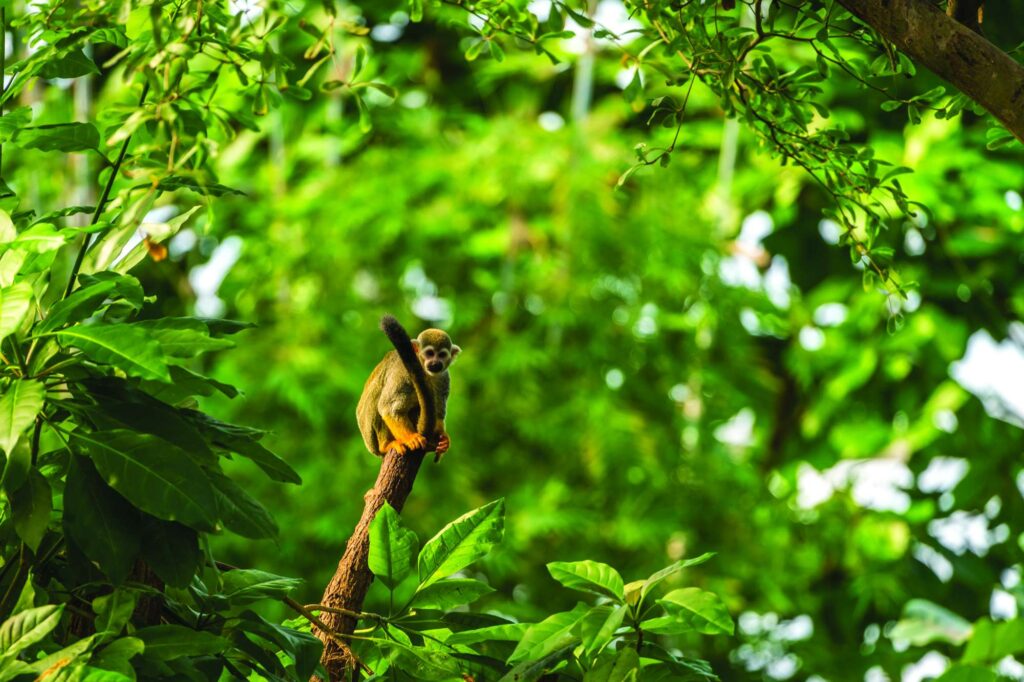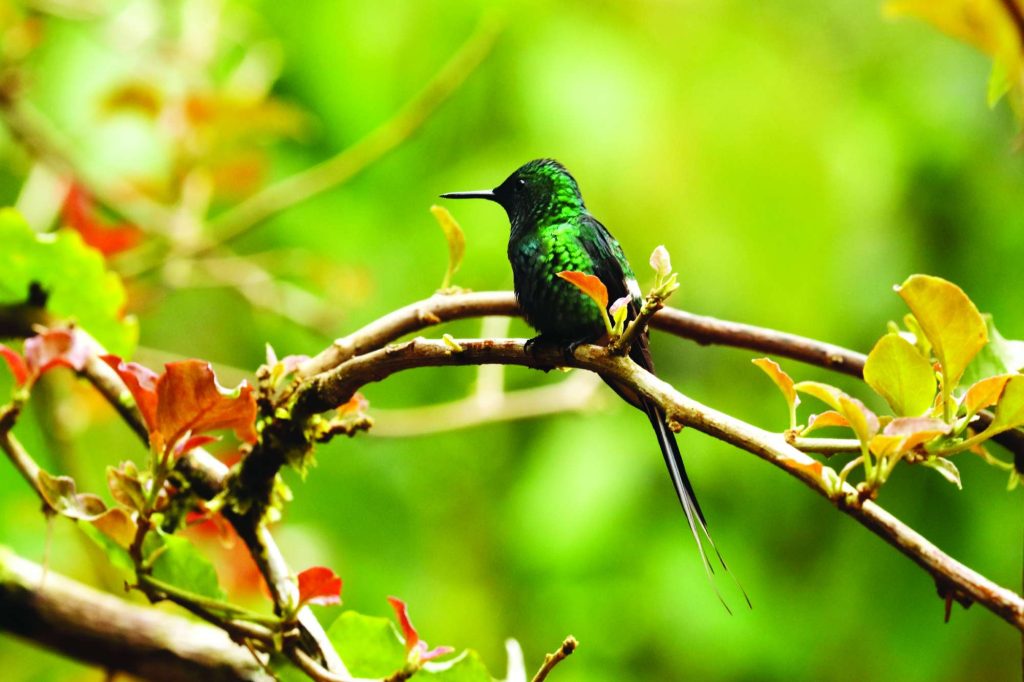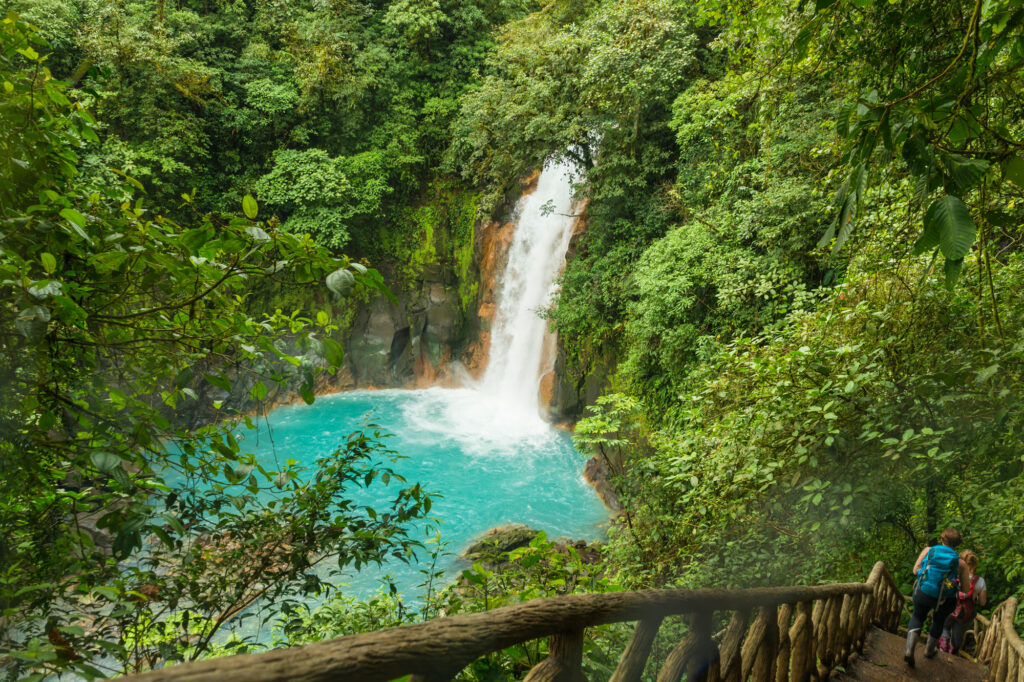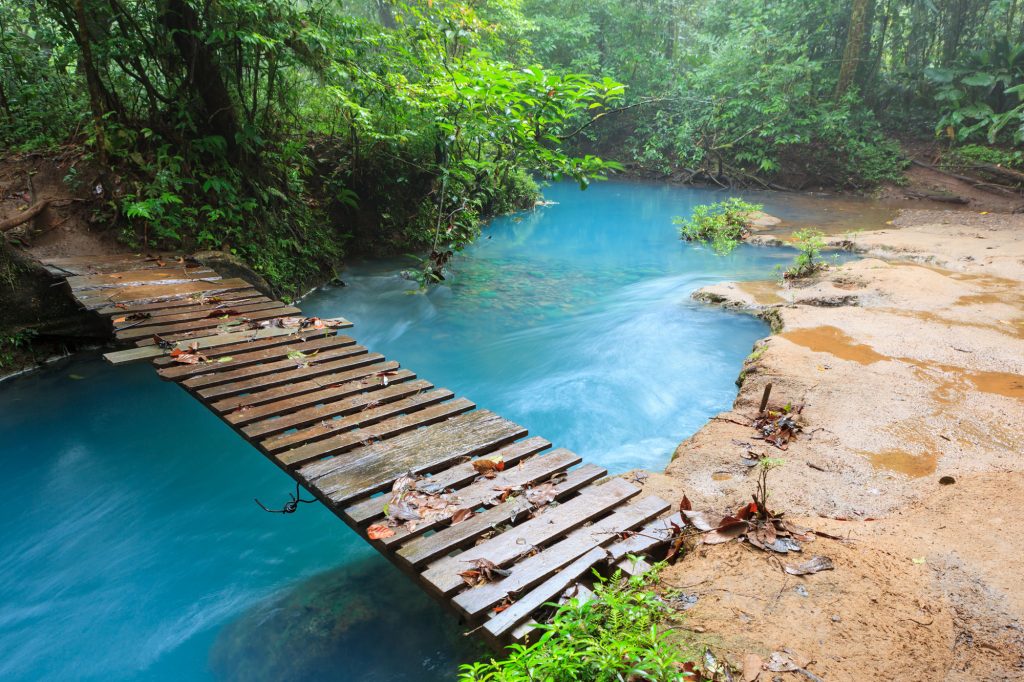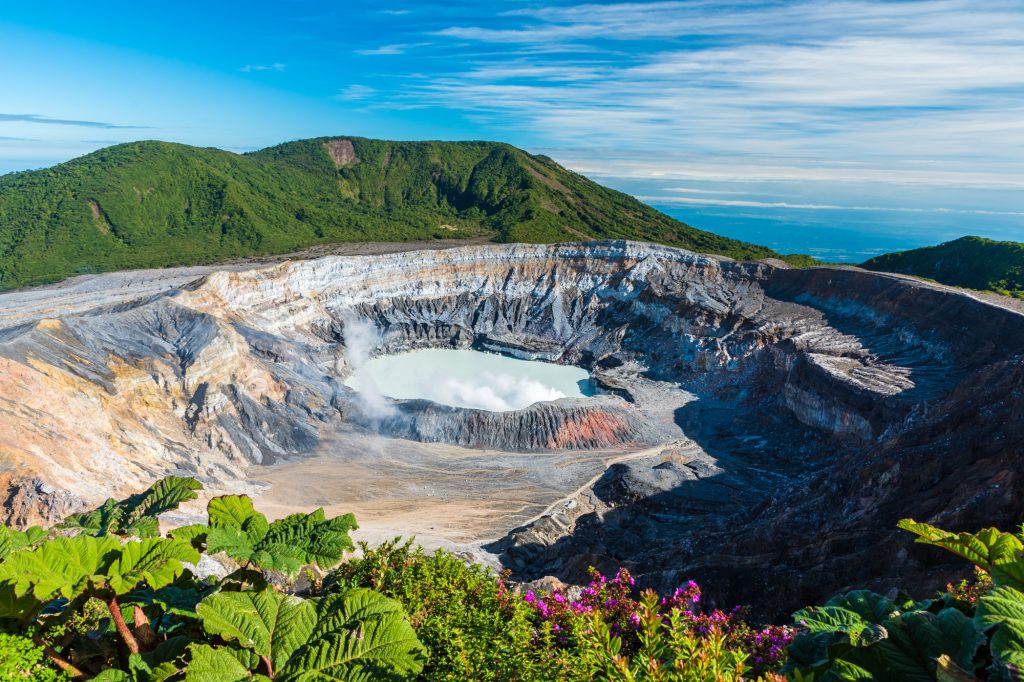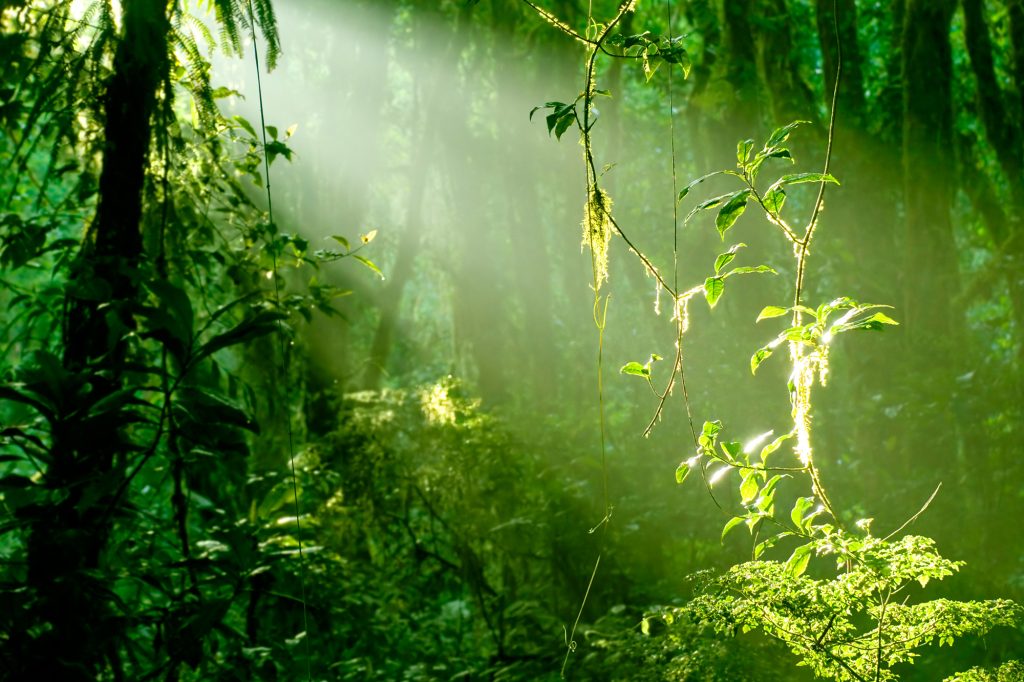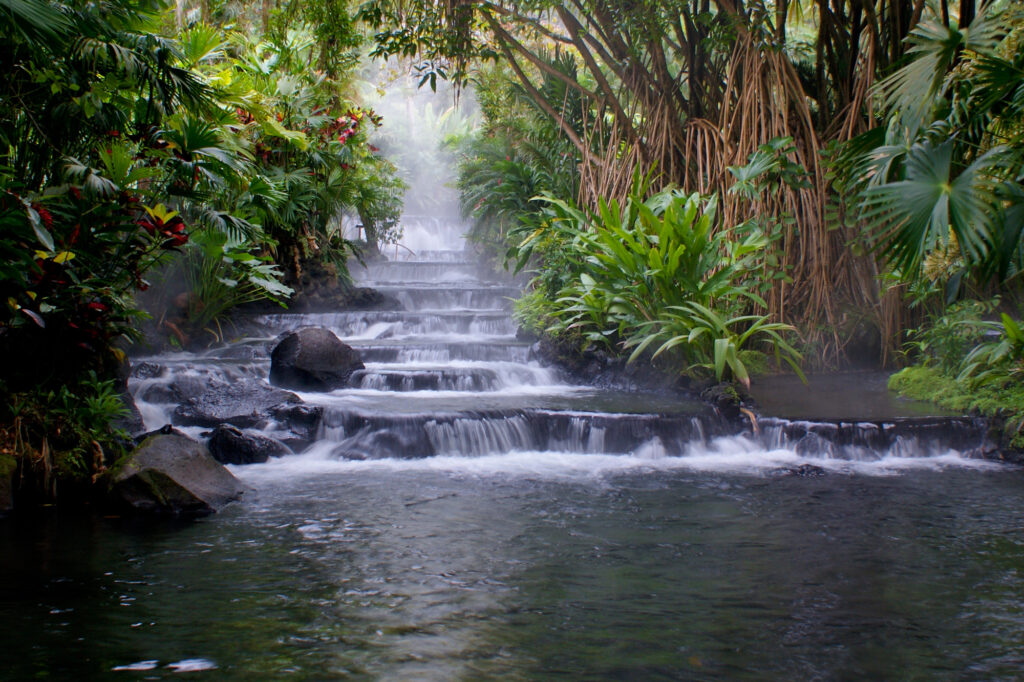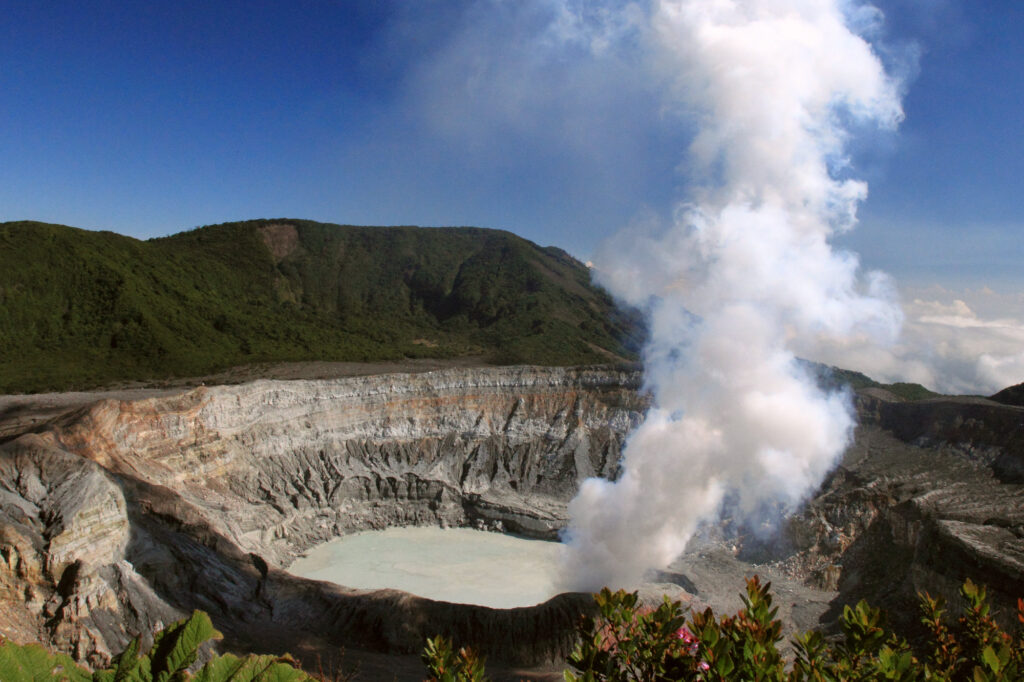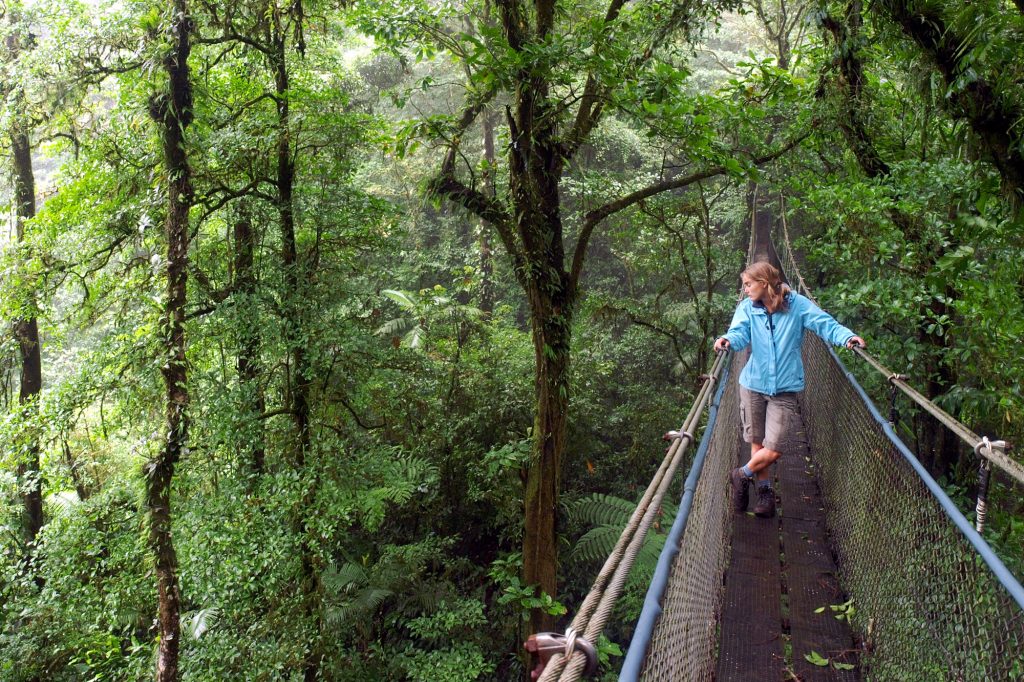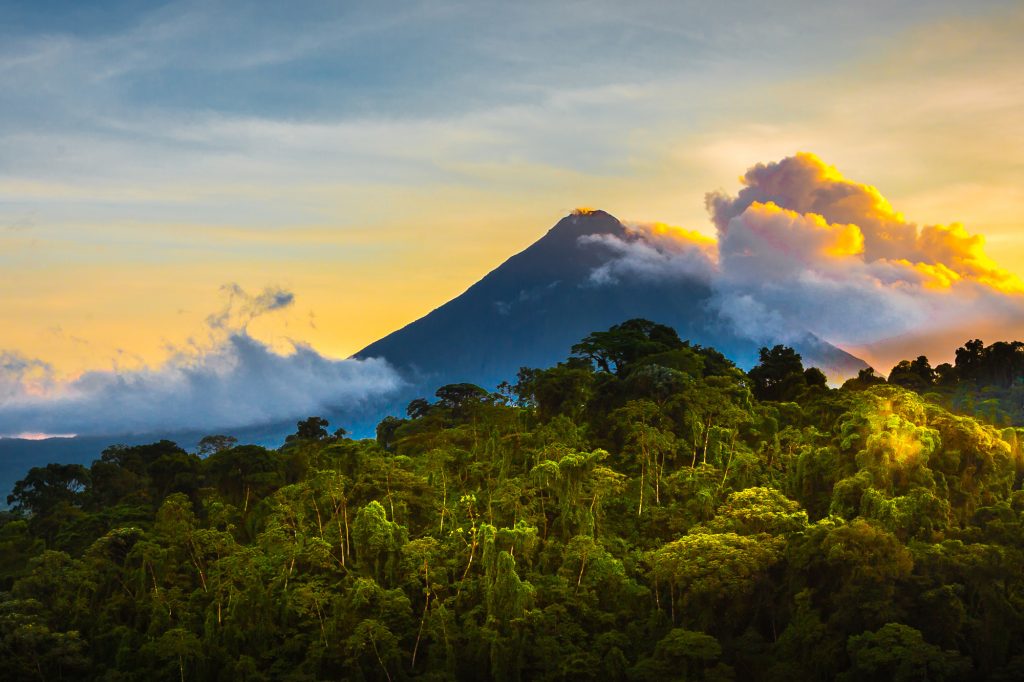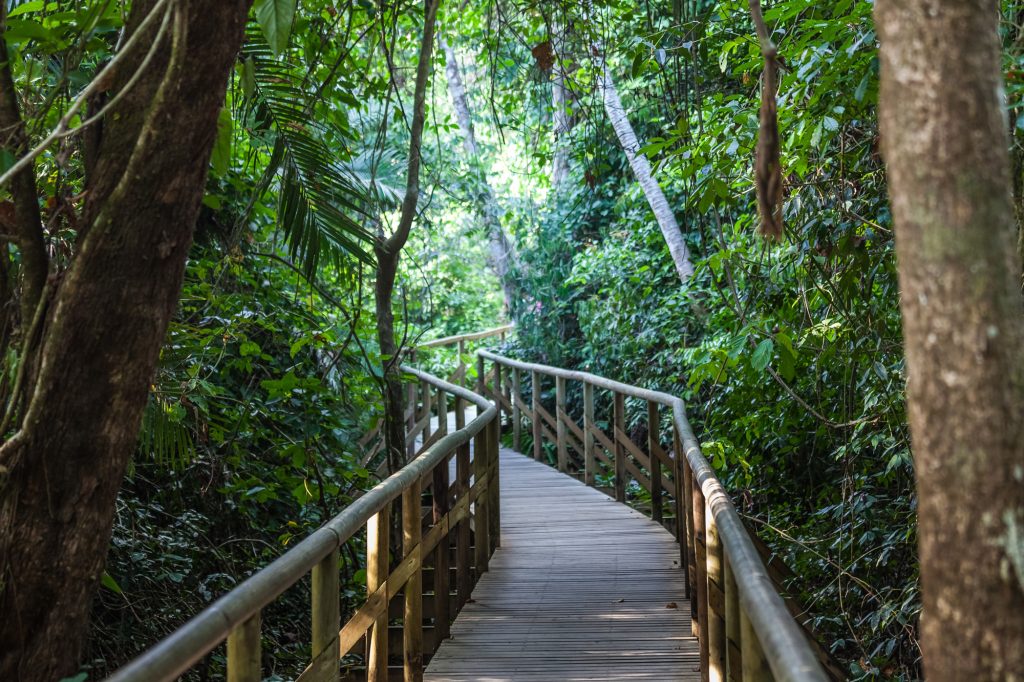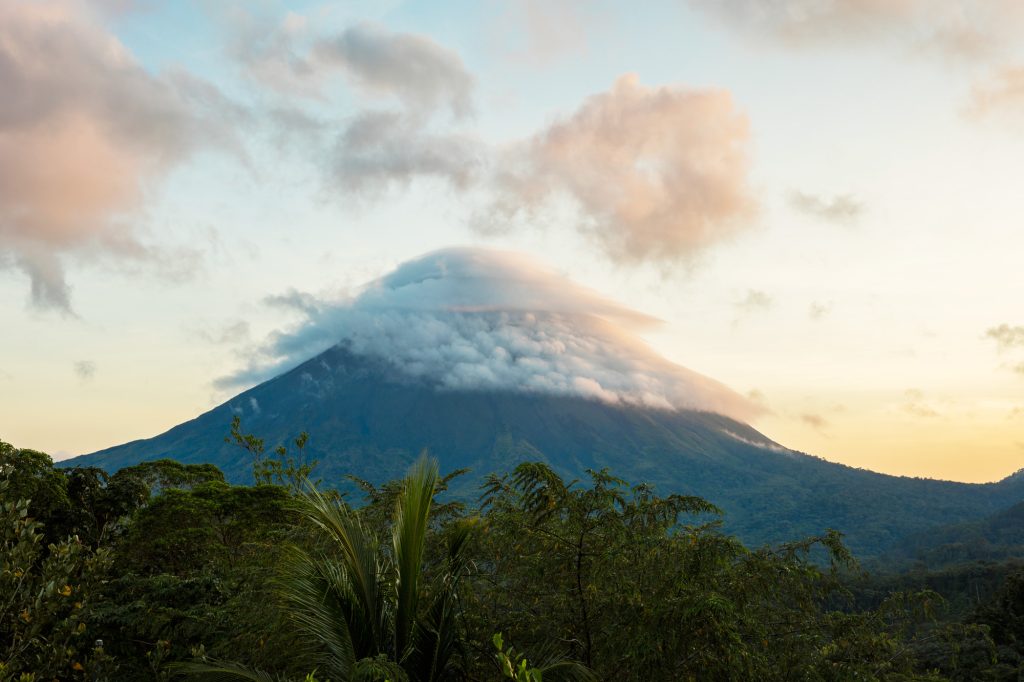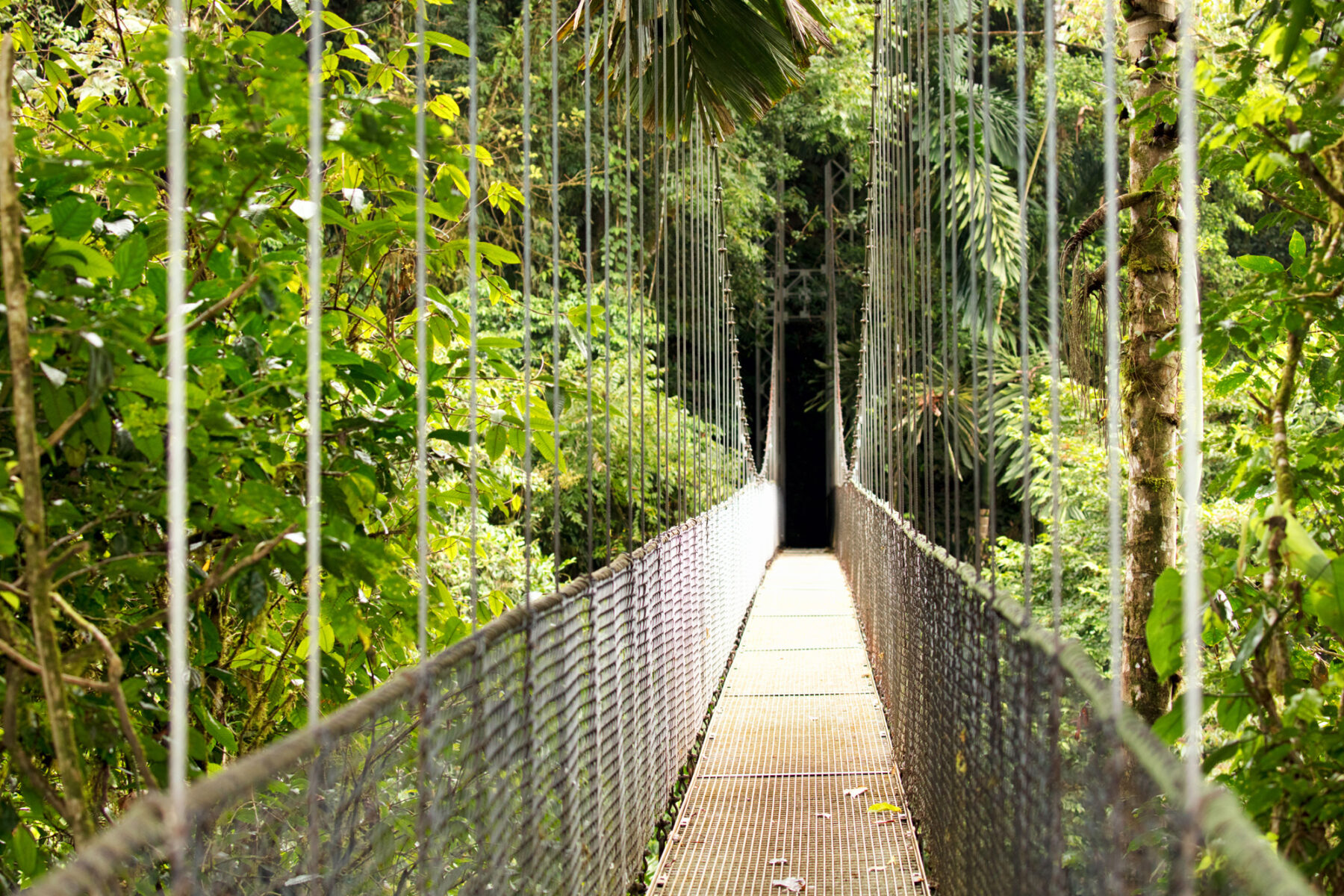
Costa Rica Volcanoes, Rainforests & Beaches
11 Days from £3200pp
Based on a group size of 30 students and 3 teachers (free places)
Embark on an educational journey to Costa Rica, where your students will encounter a diverse range of landscapes and climate zones.
From towering volcanic peaks to enchanting cloud forests and lush rainforests, the country offers an unparalleled natural playground for exploration and learning.
At the heart of Costa Rica’s ethos lies sustainability and ecotourism, making it an ideal destination for environmentally conscious travellers. With 5% of the world’s biodiversity within its borders, this nation promises an immersive experience in nature.
Made up of former teacher and travel specialists, our dedicated team will work with you from start to finish; from thoughtful curation and planning to promoting your trip, and post-trip support. They’ll share their personal experiences and provide focused assistance, curriculum expertise and local knowledge, saving you valuable time and ensuring your students get the most out of this once-in-a-lifetime learning opportunity.
In destination, expert guides will unveil the secrets of Costa Rica’s rich flora and fauna, creating unforgettable learning moments for your students.
Whether delving into geography, biology, adventure, or the country’s rich culture, Costa Rica has something to offer every student.
This example 11-day itinerary is brimming with exciting activities and educational opportunities. Our Costa Rica programme has been curated by dedicated travel specialists and former teachers and can be tailored to your curriculum and budget.
What's included
- Flights from London Heathrow to San Jose
- Hold luggage for all passengers
- Professional Guide providing outstanding knowledge of Costa Rica’s culture & geography
- Students in multi-bedded rooms with bed linen and possible shared facilities
- Staff rooming based on same sex teachers sharing multi-bedded rooms
- All excursions, activities and entrance fees as specified in the itinerary
- Full board basis – from dinner on first day to breakfast on last day
- Peace of mind with our Travel Disruption Support
- Unique no surcharge guarantee
- Loyalty Scheme with a range of benefits and discounts
- All transportation in Costa Rica, including airport transfers, in a modern, air-conditioned vehicle
Day
1
Day 1- Welcome to San José
- Fly to San José International Airport
- Meet your guide on arrival
- Transfer to San José hotel
- Overnight San José
As you land in Costa Rica’s central valley, your knowledgeable guide will meet you and will go over the exciting itinerary with you on the way to the hotel in San José.
You’ll be welcomed with your first delicious Costa Rican meal before heading to bed to a good night’s sleep before your exciting first full day tomorrow.
Day
2
Day 2- Journey to Tortuguero
- Journey to Tortuguero, driving through Braulio Carrillo National Park and banana plantations
- Boat transfer on jungle canals
- Tortuguero beach walk
- Overnight Tortuguero
Starting your day early, your group will leave the hustle and bustle of the Central Valley behind to head for the Caribbean coast.
Passing between the peaks of the Barva and Irazu volcanoes, you’ll soon be driving through the tropical rainforests of the Braulio Carrillo National Park. Even from the coach, the views of the park will be a great introduction to the diversity of landscapes in this country.
As you leave the forests and volcanic highlands behind, you’ll pass by the lowland agricultural regions, featuring countless fields of banana plantations. Bananas have been a staple of Costa Rica’s economy for well over 100 years and today Costa Rica is the third largest banana exporter in the world.
As you enter the Tortuguero National Park, you’ll soon leave the coach behind and hop aboard a boat to reach Tortuguero via a system of rivers and canals.
Tortuguero National Park was an archipelago of volcanic islands until alluvial sediments from the interior mountains filled in the spaces and formed a network of marshy islands.
Sand was deposited and piled up where the river met the sea, and the turtle nesting beaches of Tortuguero formed.
The exceptionally high rainfall, and rich environment where the freshwater meets the sea makes the beaches, canals, lagoons, and wetlands of Tortuguero areas of exceptional biodiversity.
The National Park protects 19,000 hectares and has been recognised as protected nesting sanctuary since 1963, with Green Sea, Leatherback and Hawksbill turtles all nesting on the beaches.
Though sandy and lined by palm trees, the beaches here still preserve their wild nature and characteristics.
As your group take a walk along the coast, you’ll learn more about the interface between the rainforest and the sea, and how animals here manage this stark divide in environments.
For groups visiting between July and October, you may be lucky to see some of the 22,500 female turtles that return here every year to nest and lay their eggs.
Your group will then spend the night at your accommodation in Tortuguero. Be sure to get a restful night’s sleep as it’ll be an early start tomorrow morning.
Day
3
Day 3- Tortuguero National Park
- Dawn wildlife boat tour of Tortuguero National Park
- Voluntary work at San Francisco school
- Tortuguero village tour and talk on Caribbean heritage and culture
- Sea Turtle Conservancy Centre
- Overnight Tortuguero
As the sun rises at dawn, the Tortuguero National Park comes alive with the sound of birds and the infamous call of howler monkeys. To truly experience the park as it awakens to the early morning light, you’ll take a dawn wildlife boat tour along the rivers, canals, and mangrove swamps to see what wildlife the group can spot.
After you arrive back in the village, your students will get a chance to volunteer at the San Francisco school. Working with local teachers, you can organise a range of activities to provide educational opportunities and cultural exchange with the students here. In return, you’ll learn about Costa Rica’s approach to education, especially in rural regions, where learning about wildlife and biodiversity is a core pillar of the system.
In the afternoon, you’ll explore the village of Tortuguero. Its location in the Caribbean side of the country has helped influence its unique culture, and the village is sustained economically through ecotourism.
As well as exploring the village, the group’s guide will discuss Caribbean culture. This talk perfectly unites the humanities subjects as students understand how the history, landscapes, religion have shaped Caribbean culture in Costa Rica. This talk covers the subject of the Cultural manifestations in the Caribbean region. Costa Rica’s Caribbean culture is so unique and blended that it is almost like going to another country when visiting the area. The unique language of Patois, which is a collective of both Spanish and Creole English, is spoken everywhere. A wide variety of instruments, dances, and musical techniques contribute to the Afro-Caribbean music scene in Costa Rica. Faith and religious beliefs are much more diverse in this area due to a large number of religious backgrounds.
One for the geographers of the group, you’ll finish your day with a visit to the Sea Turtle Conservancy Centre. This small museum and conservation centre will give you the opportunity to learn more about the different species of sea turtles that nest and lay their eggs on the beaches of Tortuguero. Gain an understanding of their life, habitat, and the importance of protecting them, along with the efforts that are made to maintain their habitats. You’ll then return to your accommodation in Tortuguero to rest up for your day tomorrow.
Day
4
Day 4- Sarapiquí
- Boat transfer from Tortuguero and onward journey to Sarapiquí
- Chocolate tour at La Tirimbina Biological Reserve
- Night walk at La Tirimbina Biological Reserve
Hop aboard a boat to leave Tortuguero and pick up your coach to head west to the region of Sarapiquí.
Located near the base of the Cordillera Central range, this area is quickly becoming an important ecotourism destination thanks to its close proximity to lush forests and the convergence of the Rio Puerto Viejo and Rio Sarapiquí rivers.
Following the Rio Sarapiquí, you’ll arrive the La Tirimbina Biological Reserve. This eco-lodge and research station is perfect for accessing the rainforest and learning about sustainable tourism practices, all while spotting some incredible flora and fauna.
Keep an eye on the trees as you may be lucky to see a sloth or two!
You’ll access the rainforest via a long hanging bridge which spans over the river. As you leave the tranquil lodge behind, the environment quickly transforms into a vibrant green tropical rainforest spanning 345 hectares.
Keep an eye out for some of the 900 species of birds found here, as well as a range of other animals and insects.
Your first visit to the rainforest will be on the chocolate tour where you will visit the traditional cacao plantation.
Here, you’ll get to taste the cacao bean at different stages of the chocolate-making process, as well as getting involved with the different processes necessary to create this delicious treat.
This will culminate with a lesson from a professional chocolatier who will show you how to make a variety of different chocolates.
After dinner, you’ll return to the rainforest once again for a guided night walk at Tirimbina Biological Reserve.
Though most of the birds will be resting, this is when the rainforest animals really come alive. Your expert guide will use their expertise to spot different animals including bats, iguanas, sloths, porcupines, opossums, kinkajous, and many more.
They’ll also point out some of the smaller inhabitants of the rainforest, including snakes, tarantulas, bullet ants, frogs, reptiles, moths, and more.
Seeing how the rainforest changes from day to night is a fascinating experience and perfect for anyone interested in geography, science, and biology.
Finally, it’s a short drive to your overnight stay in Sarapiquí.
Day
5
Day 5- La Fortuna & Arenal
- La Fortuna waterfall
- Arenal Volcano National Park including lava flows
- Baldi Hot Springs
- Overnight La Fortuna
Today, you’ll head towards the town of La Fortuna, located at the foot of the Arenal Volcano.
Your first stop will be the beautiful and iconic La Fortuna Waterfall, south of the town in the foothills of the dormant Chato Volcano.
As you get your first glimpse of La Fortuna Waterfall, you will quickly see why this area was used as inspiration for the classic Jurassic Park films.
Dropping 70m from the rainforest above to the blue plunge pool below, this waterfall creates a humid microclimate that promotes a great diversity of tropical plants and trees, including bromeliads, orchids, and ferns.
These plants line the 530 steps that it takes to reach the pool at the base of the waterfall so be prepared for a bit of a hike.
To promote ecological diversity and education for its visitors, you will also find a butterfly garden and orchid trail near the entrance.
No visit to La Fortuna is complete without experiencing the Arenal Volcano National Park.
Towering above the landscape to a height of 5,358ft (1,633m), this symmetrical stratovolcano is one of the most iconic in the country.
It’s also one of the youngest at just 7,500 years old. It’s eruption from 1968 to 2010 is the tenth longest duration volcanic eruption on Earth since 1750, however it has laid dormant since 2010.
The rich tropical rainforest of the national park surrounds the volcano and the dammed Lake Arenal.
As you explore this environment, your guide will point out areas of lava fields from different volcanic eruptions. They will explain how these lavas flow across the landscape, how far they travel from the summit, and show you how these baron volcanic fields are slowly claimed back by the forest.
They will also discuss how Arenal is a key centre for energy production, featuring hydroelectric, geothermal and wind power plants.
Your students will have learnt a lot today so to finish the day, they will get a chance to relax! Warmed by the geothermal heat from Arenal’s magma chamber, the Baldi Hot Springs offers a tranquil resort that is perfect to unwind.
As you enjoy the 25 thermal water pools, you’ll hear the hum of the tropical rainforest blend with the sound of running water, making you feel as though you are truly in paradise.
Overnight stay in La Fortuna.
Day
6
Day 6- Maleku & Tree Planting
- Maleku village tour
- Tree planting conservation activity
- Overnight Miravalles
Today will focus on culture and conservation, beginning with a visit to the indigenous village community of the Maleku people.
As one of the 24 different indigenous territories that still exist in Costa Rica, the community have their own language, beliefs, and ancestry that date back centuries.
The Maleku people encourage people to visit this small representation so that they are aware of their fight to preserve their culture and traditions.
This will be an eye-opening experience for students to understand how these communities live and how they are working with the government to protect their land and rights.
In the afternoon, it’s time to get involved with an activity that helped to shape Costa Rica into the country it is today.
By assisting with a local conservation team to plant trees, your students can play their part in creating future habitats and connecting isolated ecosystems, all while helping to lower their carbon footprint.
The government introduced initiatives in the 1990s that rewarded farmers for planting endemic trees, connecting small, forested areas, and protecting watersheds.
Since then, the country has gone from having one of the highest deforestation rates in Latin America, to now protecting over 28% of its land in national parks, reserves, and wildlife refuges, all of which has spurred a huge increase in ecotourism.
Head to your overnight stay in the foothills of the Miravallas Volcano.
Day
7
Day 7- Volcanoes & mud baths
Day 7
- Miravalles Volcano and viewpoint
- Las Hornillas geothermal mud baths and thermal pools
- Puma Rescue Centre
- Transfer to Monteverde
- Overnight Monteverde
Off the tourist track is the Miravalles Volcano and the surrounding geothermal area, which offers many of the same features as other volcanic destinations, but in a much more tranquil setting.
Start your day learning about this mighty stratovolcano and how, despite it not experiencing a major eruption in human history, high geothermal heat flow still remains.
So much so that Miravalles is home to Costa Rica’s largest developed geothermal field, providing sustainable energy to the Guanacaste region.
As you travel around the volcano, visit the Las Hornillas Volcanic Activity Centre.
Here, the geothermal heat will become more present as you walk inside an active crater to witness steaming hot springs, boiling mud baths, fumaroles, and yellow, sulphur-stained rocks.
Of course, you’ll also get to soak in one of the mud pools back at the centre.
Heading south from the volcano, visit the Puma Rescue Centre in the afternoon.
This non-profit centre rehabilitates and releases (where possible) a wide variety of animals that have been injured, rescued, orphaned, or confiscated from the illegal pet trade.
Your students may get to see 5 of Costa Rica’s 6 wild cats here, including margays, ocelots, jaguarundis, jaguars, and of course pumas. On top of this, you’ll also get to meet the centre’s other residents, such as white-faced capuchin and spider monkeys, toucans, scarlet macaws, parrots, white-tailed deer, and river otters, amongst many others.
This will give you a great insight into some of the work that is involved with caring for this country’s wild animals, and how rehabilitated animals are released safely into the wild.
Head to Monteverde for your overnight stay.
Day
8
Day 8- Monteverde
- Rainforest canopy hanging bridges in Monteverde
- Jungle crocodile tour
- Overnight Playa Hermosa
Day 8 is a once-in-a-lifetime experience, as you head to Monteverde.
National Geographic described Monteverde as “the jewel in the crown of cloud forests” and it is listed as one of the seven wonders of Costa Rica.
50% of the flora and Fauna in Costa Rica can be found here and it houses 2.5% of worldwide biodiversity.
Explore the forest via the treetop hanging bridges.
The Monteverde treetop walkways provide a fantastic way to safely observe the cloud forest canopy at your own pace. From the bridges you will be able to observe the endemic biodiversity of the cloud forest, as well as lookout for wildlife that resides in there.
The trail is 1.9 miles long and is made up of eight bridges of various lengths which range between 170 feet and 560 feet.
Leaving Monteverde behind, travel down to the Tarcoles River for an exciting afternoon exploring the jungle by boat.
As you venture upstream, learn about the river’s most famous residents; the American Crocodile. In fact, the Tarcoles River is considered to have one of the highest populations of crocodiles in the world!
As you learn more about these fascinating reptiles, you’ll also get to spot other birds and wildlife from the boat with the help of your expert guide.
It’s then just a short journey south to the beautiful sandy beach of Playa Hermosa for your overnight stay.
Day
9
Day 9- Manuel Antonio National Park
- Guided nature walk in Manuel Antonio National Park including free time on the beach
- Dinner and Dance Show at Mirador Tiquicia
- Overnight San José
Your final full day of activities will see you heading southeast along the coast to the stunning Manuel Antonio National Park.
Covering just 680 hectares, this small national park is renowned for its rugged coastal rainforests, white-sand beaches, and coral reefs.
On your guided walk, explore the park’s vast diversity of tropical plants and wildlife. If you’re not too distracted by the idyllic beach views visible through the trees, you may spot three-toed sloths, white-faced capuchin monkeys, and a huge array of bird species.
As your trip draws to a close, you’ll find no better place to relax than the beaches of Manuel Antonio National Park.
Voted one of the top 25 beaches in the world by Tripadvisor in 2019, the white sands, crystal blue water, and overhanging palm trees look like a scene from a computer wallpaper or travel brochure.
If you’re still looking for a geography teaching opportunity, see if your students can explain the coastal formations found here, especially the tombolo connecting to Cathedral Point.
Travelling back towards your overnight stay in San José, you’ll stop at Mirador Tiquicia, so called for its incredible vantage point overlooking the Central Valley.
From here, you’ll see the whole city, its surrounding neighbourhoods, and the volcanic mountain ranges that line the valley.
As you enjoy a delicious Costa Rican dinner, watch a traditional dance show and reflect on your adventure through this beautiful country.
Day
10
Day 10- Transfer to San Jose
Once you’ve reached the airport and said goodbye to your guide, it’ll be time to say “¡Adios Costa Rica!”
Day
11
Day
12
Day
13
Day
14
Day
15
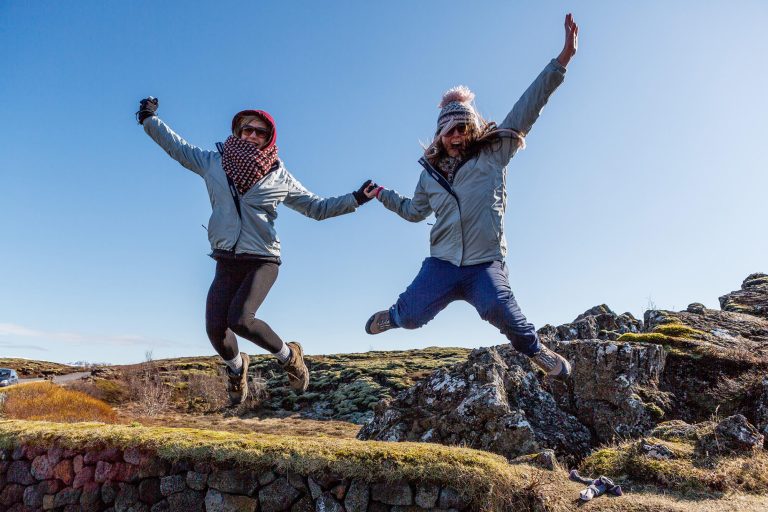
School Trip Planning Hub
We know that the real job of selling a school trip is down to you and your colleagues so we've collated some helpful resources for you to use to make sure you not only get the buy in from your students and their parents, but also that you have all the details you need to ensure a simple planning process.
Launching Your School Trip